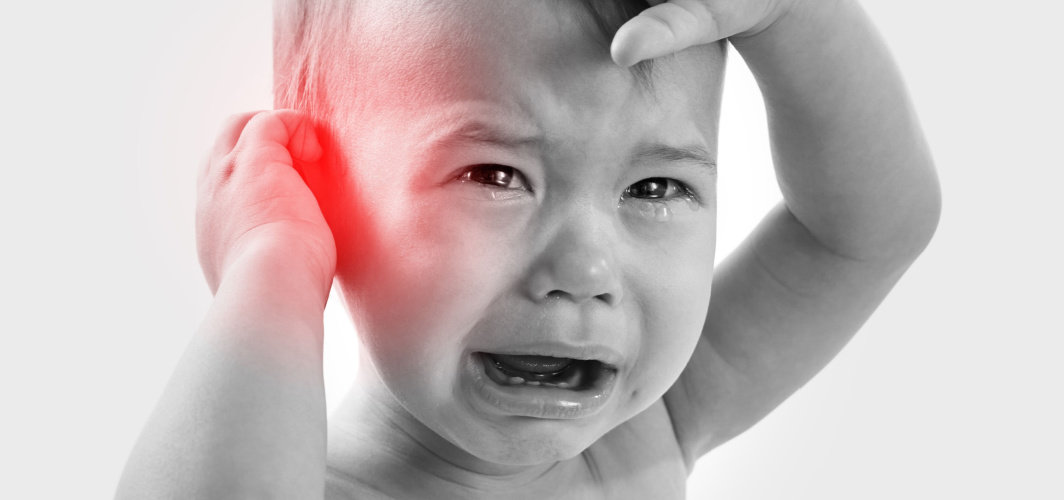- Home
- Blog
- Mom & Baby Care
Anaemia in Children: Signs, Causes, and Treatment
Mom & Baby Care
Anaemia in Children: Signs, Causes, and Treatment
By Apollo Pharmacy, Published on- 27 October 2023
Share this article
0
0 like

Anaemia is an important health concern because it can affect various aspects of a person's life, including physical and cognitive performance. It can also impact the immune system and make individuals more susceptible to infections. Anaemia is a significant public health problem in India, especially among children. According to recent studies, more than 60% of children under five years old in India are affected by anaemia. In this blog, we will explore the causes, symptoms and signs of anaemia to give a better understanding of the treatment of anaemia.
What is Anaemia?
Anaemia is a condition in which the body lacks enough healthy red blood cells or haemoglobin to carry adequate oxygen to the tissues.
1. Role of Red Blood Cells
Red blood cells are produced in the bone marrow and contain haemoglobin, which binds to oxygen. As they travel through the body, red blood cells deliver oxygen to tissues and remove carbon dioxide. Haemoglobin plays a crucial role in carrying oxygen from the lungs to all parts of the body.
2. Common Types of Anemia Found in Children
The following are the anaemia types commonly found in children:
- Iron-deficiency Anaemia: This anaemia type arises when iron is deficient in the body. It is one of the most common types of anaemia in children, usually caused by poor dietary intake or decreased iron absorption.
- Vitamin-deficiency Anaemia: When there is a deficiency of certain vitamins like vitamin B12 or folate, it can result in anaemia. These vitamins are essential for red blood cell production and their deficiency affects their proper development.
- Genetic or Inherited Anaemia: Certain genetic conditions like thalassaemia or sickle cell disease can cause anaemia in children. These conditions affect the structure or production of red blood cells, leading to a reduced lifespan of these cells.
Signs and Symptoms of Anaemia in Children
It's important to recognize anaemia indications early, as anaemia can affect a child's growth, development, and overall health. If your child exhibits any of these anaemia symptoms, consult a doctor for further evaluation and guidance on managing anaemia.
1. Physical Anemia Symptoms to Look Out For
Some physical symptoms of anaemia are:
- Pale skin, lips, and nail beds
- Fatigue or lack of energy
- Shortness of breath or rapid heartbeat
- Weakness or dizziness
2. Behavioural Signs of Anaemia
Behavioural signs of anaemia are:
- Irritability or mood swings
- Poor appetite
- Cravings for non-food items like ice, dirt, or paper
- Difficulty concentrating or learning problems
Common Causes of Anaemia in Children in India
Common causes of anaemia in children in India include:
1. Nutritional Factors
Nutritional deficiencies can be a major factor for anaemia:
- Lack of Iron-rich Foods: Iron is an essential mineral for the production of healthy red blood cells. When children don't consume enough iron-rich foods, it can lead to anaemia.
- Vitamin Deficiency: Vitamins like B12 and folate are essential for the production of healthy red blood cells. If children have a deficiency in these vitamins, it can result in anaemia.
2. Infectious Diseases and Parasitic Infections
Certain infectious diseases and parasitic infections can contribute to anaemia in children. Malaria, a mosquito-borne disease prevalent in India, destroys red blood cells. Hookworms, common in areas with poor sanitation, feed on blood and nutrients in the intestines, leading to anaemia.
Preventive measures such as mosquito nets and deworming treatments can help reduce the risk of anaemia caused by these infections.
3. Genetic Factors
Conditions like sickle cell disease and thalassaemia affect the structure or production of red blood cells, leading to a reduced lifespan of these cells and subsequently causing anaemia.
Genetic counselling and prenatal testing can help identify these conditions early on and provide appropriate management options.
Diagnostic Tests for Anaemia
Seeking medical attention is important if you experience anemia symptoms. Early diagnosis is essential to determine the underlying cause and develop an appropriate treatment plan. The following diagnostic tests are commonly used to detect anaemia in children:
1. Complete Blood Count (CBC)
Complete Blood Count test measures various components of your blood, including red blood cells, white blood cells, and platelets. It provides valuable information about the size, shape, and quantity of red blood cells, helping identify different types of anemia.
2. Iron studies
Iron studies measure the levels of iron in your body, including serum ferritin (a protein that stores iron) and transferrin saturation (the percentage of iron-binding sites on transferrin that are occupied by iron).
3. Vitamin Level Testing
Deficiencies in vitamins like B12 and folate can cause certain anaemia types. Testing the levels of these vitamins helps diagnose the underlying cause accurately.
4. Genetic Testing
In some cases, anaemia may be due to inherited conditions like sickle cell disease or thalassaemia. Genetic testing can identify specific gene mutations responsible for these conditions, aiding in diagnosis and genetic counselling.
Treatment Options for Anaemia
The treatment for anaemia depends on the underlying cause and severity of the condition. Here are some common treatment options for anaemia:
1. Dietary Changes
A balanced diet plays an important role in preventing and treating anaemia in children. It is essential to include iron-rich foods in their meals to boost their iron levels. Some recommended iron-rich foods for children include:
- Lean meats
- Eggs
- Fortified cereals
- Dark green leafy vegetables like spinach
- Legumes such as lentils and beans
These foods are packed with essential vitamins and minerals that can help increase the production of red blood cells and improve overall health.
2. Iron and Vitamin Supplements
In some cases, dietary changes alone may not be sufficient to address anaemia. Iron and vitamin supplements can be prescribed by a doctor to help raise iron levels in the body. The appropriate dosage and administration guidelines vary depending on the severity of anaemia and the individual's age and overall health. Supplements are available in different forms such as:
- Liquid
- Chewable tablets
- Capsules
It is, however, important to follow the prescribed dosage and consult a doctor before starting any supplements.
3. Blood Transfusions
In severe cases or when other anaemia treatment options prove ineffective, blood transfusions may be necessary. Blood transfusions involve receiving healthy blood from a compatible donor to increase the number of red blood cells in the body.
Lifestyle Modifications to Combat Anaemia
Lifestyle modifications can complement medical treatment for anaemia, improve overall well-being, and help manage the condition effectively.
1. Educating Parents and Caregivers
It is important to educate parents and caregivers about the significance of adherence to treatment plans for managing anaemia. By understanding the importance of compliance, they can ensure that the prescribed treatment, including medications and dietary modifications, is followed diligently.
Educating them about the signs of anemia will also help them recognise the symptoms and take appropriate action promptly.
2. Strategies to Improve Iron Absorption
You can follow the following strategies to improve iron absorption and maximise nutrient intake:
- Pair iron-rich foods with vitamin C-rich sources like citrus fruits to boost iron absorption.
- Avoid tea or coffee during meals, as they inhibit iron absorption.
- Incorporate other nutrients like vitamin B12 and folate through foods or supplements to improve overall nutrient intake.
3. Healthy Sleep Patterns and Stress Management
Maintaining healthy sleep patterns and managing stress play a vital role in supporting anaemia treatment. Lack of sleep can negatively impact the immune system and overall health, leading to decreased energy levels. Encouraging a consistent sleep routine by establishing regular bedtimes and creating a conducive sleep environment can promote better quality sleep.
Additionally, stress management techniques like meditation, deep breathing exercises, or engaging in hobbies can help alleviate stress levels and enhance overall well-being.
Prevention Strategies for Anaemia
Preventing anaemia in children requires a multifaceted approach. Some strategies include:
1. Encourage Breastfeeding
Breastfeeding plays a vital role in preventing anaemia in infants. Breast milk is rich in iron, which is readily absorbed by the baby's body. Exclusive breastfeeding for the first six months helps provide adequate iron stores, reducing the risk of anaemia. Introducing iron-rich complementary foods after six months is crucial for maintaining iron levels as breast milk alone may not suffice.
2. Immunisations
Diseases like malaria and certain types of bacterial or viral infections can cause haemolysis (destruction of red blood cells), leading to anaemia. Vaccines such as the pneumococcal conjugate vaccine (PCV) and measles vaccine are recommended to prevent these infections.
By ensuring that children receive the appropriate immunisations at the recommended age, the risk of developing anaemia due to these infections can be significantly reduced.
3. Regular Check-ups
Regular check-ups and screenings are essential for the early detection and management of anaemia in children. Early detection allows for timely intervention and appropriate treatment to prevent complications associated with anaemia.
Conclusion
Throughout this blog, we have highlighted the significance of early detection, treatment, and prevention of anaemia in children. We have discussed the various types and causes of anaemia, and explored the common symptoms of anaemia. Early detection plays a key role in managing anaemia in children. Regular health check-ups and timely screening tests can help identify anaemia at an early stage, enabling prompt treatment intervention. If you notice any signs of anaemia or have concerns about your child's health, it is essential to seek medical advice. Remember that early intervention can make a significant difference in managing and preventing anaemia in children.
FAQs
Q. Can anaemia cause hair loss and brittle nails?
Yes, certain types of anaemia, such as iron deficiency anaemia, can cause hair loss and brittle nails. Iron deficiency affects the production of red blood cells, which are responsible for carrying oxygen to the tissues. This can result in inadequate oxygen supply to the hair follicles and nails, leading to hair loss and brittle nails.
Q. Is it true that anaemia can cause cravings for non-food items like ice or clay?
Yes, some individuals with anaemia may experience a condition called pica, which causes unusual cravings for non-food items like ice, clay, or dirt.
Q. Can anaemia affect your mood and mental health?
Yes, anaemia can have an impact on your mood and mental health. Anaemia can lead to fatigue, weakness, and feelings of low energy. This can contribute to mood changes like irritability, difficulty concentrating, and even symptoms of depression.
Q. Can certain medications contribute to the development of anaemia?
Yes, certain medications can cause or contribute to anaemia. For example, some cancer treatments like chemotherapy or radiation therapy; nonsteroidal anti-inflammatory drugs (NSAIDs); and some antibiotics may drastically reduce blood cell production.
Q. Can anaemia cause irregular periods?
Yes, anaemia can cause irregular periods. Insufficient iron levels affect the production of hormones involved in menstruation, leading to changes in the menstrual cycle.
Services
Mom & Baby Care
Leave Comment
Services
Recommended for you

Mom & Baby Care
This Immunization Week Learn About The 6 In 1 Vaccine For Babies
Read to know more about the new 6 in 1 vaccine that would help boost your newborn's immunity against several diseases.

Mom & Baby Care
Moms-to-be and Moms: Mental health matters
Motherhood brings both joy and sadness. A new mother juggles her physical and mental health. Taking care of mental health with a good approach may help. #ApolloPharmacy #MomsMentalHealth #BeWithHer #CareForHer #GiveMomABreak

Mom & Baby Care
Baby Showing Signs Of An Ear Infection? Here's When To See A Doctor
Ear infections are common in babies. However, frequent ear infections may indicate underlying issues, requiring further testing or monitoring.
Subscribe
Sign up for our free Health Library Daily Newsletter
Get doctor-approved health tips, news, and more.

